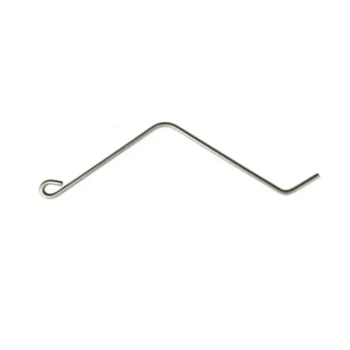The most effective way to protect hive components from ultraviolet (UV) rays is by applying a high-quality exterior latex paint. This is especially critical for modern polystyrene hives, as direct sun exposure will degrade the material over time, shortening the functional life of your equipment.
The core issue is material degradation, not aesthetics. Protecting a hive, particularly a polystyrene one, from UV radiation with the correct paint is a fundamental step in hive maintenance that directly impacts its structural integrity, insulating properties, and longevity.

Why UV Protection is Non-Negotiable
Understanding the impact of UV radiation on your equipment is the first step toward proper long-term hive management. The material of the hive dictates the urgency and nature of the protection required.
The Vulnerability of Polystyrene
Polystyrene is a fantastic insulator, but its primary weakness is prolonged exposure to sunlight. UV rays cause the polymer chains to break down, a process called photodegradation, which makes the surface brittle and chalky.
Impact on Hive Integrity
This degradation is not just cosmetic. A brittle hive is more susceptible to physical damage from handling or pests. More importantly, a compromised surface can reduce the hive's insulating efficiency, forcing the colony to work harder to regulate its internal temperature.
A Note on Traditional Wood Hives
While wood is less susceptible to UV degradation than polystyrene, it still requires protection. For wooden hives, paint or stain primarily serves to seal the wood from moisture, preventing rot and warping, with UV protection as a secondary benefit.
Selecting the Right Protective Coating
The type of paint you choose is critical. The wrong coating can damage the hive material or, even worse, harm your bees.
Why Exterior Latex Paint is the Standard
Water-based exterior latex paint is the universally recommended choice. It adheres well to polystyrene, remains flexible to prevent cracking, and is breathable. Most importantly, once it has fully cured, it is non-toxic to the bees.
The Importance of Light Colors
Choosing a light color, such as white or a pastel, is highly strategic. Lighter colors reflect sunlight and heat, which helps keep the hive cooler during hot summer months. This reduces thermal stress on the colony and can improve productivity.
What to Avoid
Never use oil-based paints or primers on polystyrene. The solvents in these products can chemically melt or dissolve the material. Also, avoid dark colors, as they absorb excessive heat and can lead to dangerous overheating inside the hive.
Understanding the Trade-offs and Considerations
Properly protecting your equipment involves acknowledging that no material is entirely maintenance-free.
The Myth of "Paint-Free" Durability
While polystyrene is incredibly durable against rot and moisture, it is not invincible. Leaving it unpainted in the sun is the fastest way to shorten its lifespan. The initial effort of painting pays dividends in longevity.
Maintenance and Reapplication
Painting is not a one-time task. Depending on your climate and the intensity of sun exposure, you should expect to reapply a fresh coat of paint every few years to maintain a strong protective barrier.
Making the Right Choice for Your Hive's Longevity
Your specific goal will guide your approach to protecting your hive components.
- If your primary focus is maximum durability: Apply a minimum of two coats of a high-quality, light-colored exterior latex paint to ensure complete UV blockage.
- If your primary focus is colony health: Always choose white or a very light pastel color to provide maximum heat reflection, reducing thermal stress on the bees.
- If your primary focus is long-term efficiency: Ensure hive surfaces are clean and dry before your first paint application to guarantee proper adhesion and extend the time before repainting is needed.
Properly protecting your hive components from the elements is a direct investment in the health of your colony and the sustainability of your beekeeping efforts.
Summary Table:
| Hive Material | Primary Threat | Recommended Protection | Key Benefit |
|---|---|---|---|
| Polystyrene | UV Degradation (Brittleness) | Light-Colored Exterior Latex Paint | Preserves structural integrity & insulation |
| Wood | Moisture & Rot | Paint or Stain | Seals wood; UV protection is a secondary benefit |
Protect Your Apiary Investment with Professional-Grade Supplies
Your commercial operation depends on durable, reliable equipment. HONESTBEE supplies beekeeping supplies and equipment to commercial apiaries and beekeeping equipment distributors through wholesale-focused operations. We provide the high-quality, light-colored exterior latex paints and protective coatings you need to shield your hives from UV damage, prevent costly degradation, and support colony health.
Invest in longevity and efficiency for your business.
Contact HONESTBEE today to discuss your wholesale needs and ensure your hives are built to last.
Visual Guide

Related Products
- Long Langstroth Style Horizontal Top Bar Hive for Wholesale
- Professional Drop-Style Hive Handles for Beekeeping
- Endless Loop Ratchet Hive Strap
- Inner Beehive Cover for Beekeeping Bee Hive Inner Cover
- HONESTBEE Advanced Ergonomic Stainless Steel Hive Tool for Beekeeping
People Also Ask
- How are entrances designed in top bar hives? Master Beehive Layout for Maximum Honey
- What are the main differences between Langstroth hives and top bar hives? Choose the Right Hive for Your Beekeeping Goals
- What are the advantages of a top bar hive? Simpler, Bee-Centric Beekeeping for All
- What is a top bar bee hive? A Natural, Low-Stress Beekeeping Solution
- What are the most popular types of hives besides the Langstroth? Top Bar & Horizontal Hives Explained



















